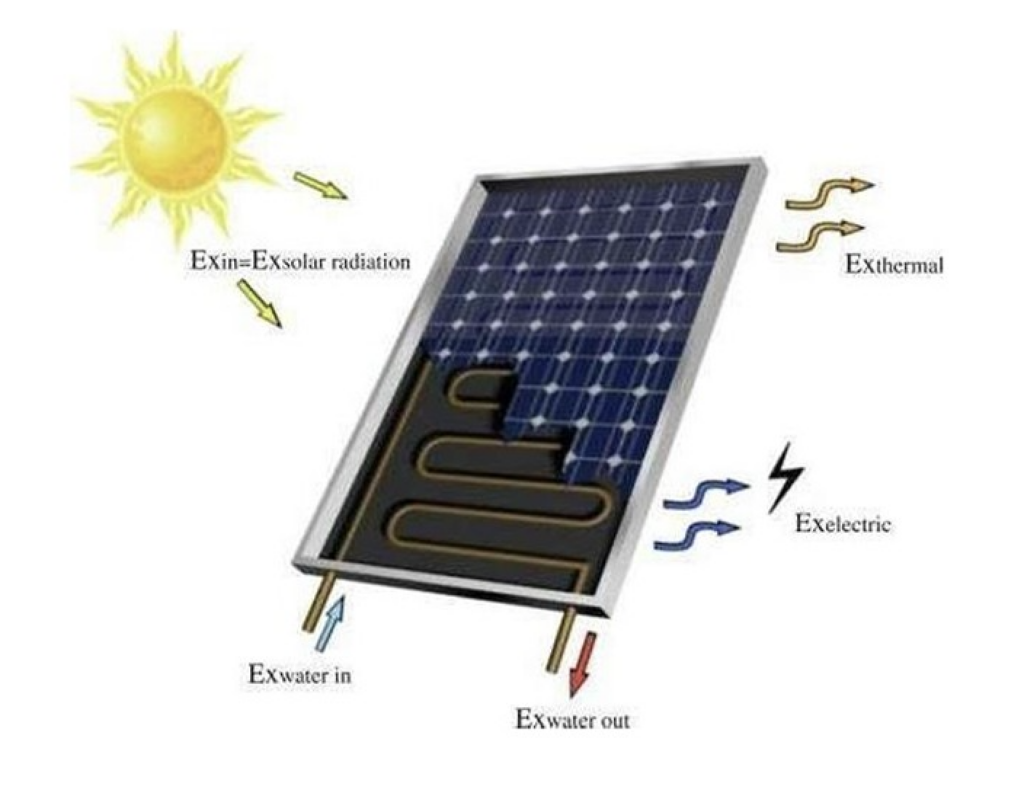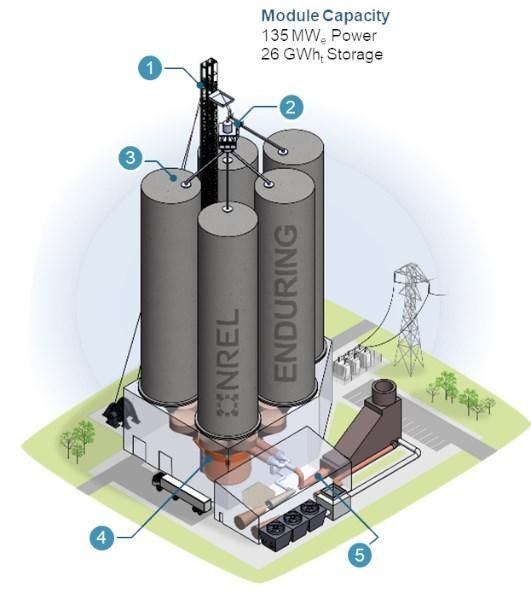2,000,000 solar panels left to rot — America’s greatest energy failure exposed – El Diario 24

Report on Solar Energy Infrastructure Challenges and Sustainable Development Goals
Introduction: Assessing Progress Towards SDG 7 (Affordable and Clean Energy)
The renewable energy sector is facing significant challenges in long-term sustainability and execution, jeopardizing progress towards Sustainable Development Goal 7. While solar technology has been a cornerstone of the clean energy transition, recent developments, such as the potential early closure of the Ivanpah Solar Power Plant, highlight critical vulnerabilities in planning and technological adaptation. This report examines the case of the Ivanpah facility and its broader implications for achieving the Sustainable Development Goals (SDGs).
Technological and Economic Viability in Relation to SDG 9 (Industry, Innovation, and Infrastructure)
The Ivanpah plant, once the world’s largest concentrated solar power facility, now faces premature decommissioning due to a failure to keep pace with industry innovation and maintain economic competitiveness, directly impacting the resilience of energy infrastructure as outlined in SDG 9.
- Technological Obsolescence: The $2.2 billion facility utilizes concentrated solar power (CSP) technology, which has been surpassed by newer, more cost-effective conventional solar panel technologies.
- Economic Non-viability: The plant has struggled to compete on price, leading major utility providers to seek termination of their power purchase agreements.
- Contractual Terminations:
- Pacific Gas & Electric (PG&E) has reached an agreement to end its contract.
- Southern California Edison is negotiating a potential buyout.
- Impact on SDG 7: Utilities argue that exiting these contracts will lower energy costs for consumers, aligning with the “affordable” aspect of SDG 7, but it underscores the failure of this specific infrastructure project to provide a sustainable long-term solution.
Conflict with SDG 15 (Life on Land) and Environmental Sustainability
The project’s design and operation have resulted in significant negative environmental impacts, placing it in direct conflict with the objectives of SDG 15, which aims to protect and restore terrestrial ecosystems.
- Ecosystem Destruction: The facility’s construction on five square miles of the Mojave Desert destroyed fragile ecosystems and rare plant species.
- Wildlife Harm: The concentrated sunlight has been criticized by conservation groups for causing thousands of avian deaths annually and threatening the habitat of the protected desert tortoise.
- Social Impact: The intense glare from the thousands of mirrors poses a visual hazard to drivers on the adjacent Interstate 15, creating safety concerns.
Implications for SDG 12 (Responsible Consumption and Production)
The potential closure of the Ivanpah plant raises critical questions regarding the end-of-life management for large-scale renewable energy projects, a key concern for SDG 12.
- Premature Decommissioning: If PG&E’s exit is approved, two of the plant’s three units could be shut down by 2026, 13 years ahead of schedule.
- Waste and Asset Management: The operating company, NRG Energy, has not disclosed the costs or plans for decommissioning the existing equipment, creating uncertainty about the responsible management of materials and the potential for the site to become an abandoned industrial landscape.
- Future Land Use: While conversion to conventional solar panels has been suggested, the lack of a concrete plan highlights a gap in ensuring sustainable production cycles for renewable energy infrastructure. This situation represents a significant setback in demonstrating responsible industrial production.
Analysis of Sustainable Development Goals (SDGs) in the Article
1. Which SDGs are addressed or connected to the issues highlighted in the article?
- SDG 7: Affordable and Clean Energy
- SDG 9: Industry, Innovation, and Infrastructure
- SDG 15: Life on Land
2. What specific targets under those SDGs can be identified based on the article’s content?
SDG 7: Affordable and Clean Energy
- Target 7.2: By 2030, increase substantially the share of renewable energy in the global energy mix. The article directly discusses a major solar power plant, a key component of the renewable energy mix. The plant’s potential closure represents a setback for this target, as it would decrease the contribution of this facility to the energy supply.
- Target 7.a: By 2030, enhance international cooperation to facilitate access to clean energy research and technology, including renewable energy, energy efficiency and advanced and cleaner fossil-fuel technology, and promote investment in energy infrastructure and clean energy technology. The article highlights the failure of an older solar technology (“concentrated solar power”) to compete with “newer, cheaper solar technologies,” underscoring the importance of continuous innovation and investment in more efficient and cost-effective clean energy technologies to ensure long-term sustainability.
SDG 9: Industry, Innovation, and Infrastructure
- Target 9.1: Develop quality, reliable, sustainable and resilient infrastructure… to support economic development and human well-being. The Ivanpah Solar Power Plant is a significant infrastructure project. Its struggle to meet production targets, financial non-viability, and potential early closure demonstrate a failure to create sustainable and resilient infrastructure. The article notes that “what once seemed to be an unstoppable energy revolution has exposed cracks in planning, long-term sustainability, and now execution.”
SDG 15: Life on Land
- Target 15.5: Take urgent and significant action to reduce the degradation of natural habitats, halt the loss of biodiversity and, by 2020, protect and prevent the extinction of threatened species. The article explicitly states that the project has been criticized for its environmental impact. It mentions that the plant “destroyed fragile desert ecosystems and rare plant species,” has “killed thousands of birds each year,” and may “threaten the habitat of the desert tortoise.” These outcomes are in direct opposition to the goals of this target.
- Target 15.9: By 2020, integrate ecosystem and biodiversity values into national and local planning, development processes, poverty reduction strategies and accounts. The severe negative environmental consequences of the Ivanpah plant, as described by conservation groups, suggest a failure to properly integrate ecosystem and biodiversity considerations into the project’s planning and development phases.
3. Are there any indicators mentioned or implied in the article that can be used to measure progress towards the identified targets?
Indicators for SDG 7 Targets
- Indicator for Target 7.2: The operational status and energy output of renewable energy facilities. The article implies this indicator by discussing the potential shutdown of “two of the plant’s three units,” which would directly measure a decrease in the contribution of renewable energy from this source.
- Indicator for Target 7.a: The cost-effectiveness of different renewable energy technologies. The article implies this by stating the plant “has struggled to compete with newer, cheaper solar technologies” and that ending contracts “could lower energy costs for consumers,” pointing to the relative cost of energy production as a key metric.
Indicators for SDG 9 Targets
- Indicator for Target 9.1: The operational lifespan and economic viability of infrastructure projects. The plant’s potential closure “13 years early” and its financial struggles serve as direct measures of its lack of sustainability and resilience. The initial cost of “$2.2 billion” versus its premature end highlights a poor return on investment for sustainable infrastructure.
Indicators for SDG 15 Targets
- Indicator for Target 15.5: The number of animals killed or displaced by development projects. The article provides a specific, albeit qualitative, indicator by mentioning the death of “thousands of birds each year.”
- Indicator for Target 15.5: The impact on threatened species and habitat degradation. The article points to this by noting the threat to the “habitat of the desert tortoise” and the destruction of “fragile desert ecosystems and rare plant species.” These can be measured through population counts and ecosystem health assessments.
4. Summary Table of SDGs, Targets, and Indicators
| SDGs | Targets | Indicators |
|---|---|---|
| SDG 7: Affordable and Clean Energy |
|
|
| SDG 9: Industry, Innovation, and Infrastructure |
|
|
| SDG 15: Life on Land |
|
|
Source: eldiario24.com

What is Your Reaction?
 Like
0
Like
0
 Dislike
0
Dislike
0
 Love
0
Love
0
 Funny
0
Funny
0
 Angry
0
Angry
0
 Sad
0
Sad
0
 Wow
0
Wow
0

















































:focal(1500,1000)/https://media.globalcitizen.org/a6/9a/a69a4720-d8a1-4715-b596-18738d03c05c/rotary_polio_hero_image.jpg?#)






/countries/sri-lanka/photo-credit---dmc-sri-lanka.tmb-1200v.jpg?sfvrsn=dc298bcc_1#)

















